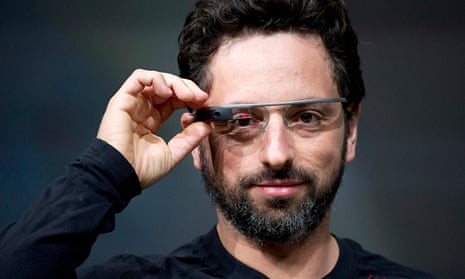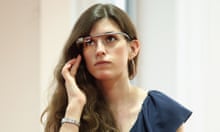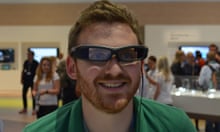The Romans had a phrase for it: Ars est celare artem. That is: “The art is to conceal the art.” When you’re doing something really difficult in public with the intent of gaining attention, don’t let on how difficult it is to do. You don’t hear guitarists saying “OK, this riff is really hard” ahead of the hit song. Actors don’t say “it’s hell learning these lines, watch this” before they appear as Hamlet. That’s because people generally don’t want to know how difficult it is to do something; they want to see the results. This came to mind as I considered the contrast between Google Glass and the Apple Watch. Here are two giants of the technology industry, with respected worldwide brands; they vie for top position among the best-known and most-valued technology brands. And they’re both moving into the wearable technology space. Google is doing it with the emphasis on technology. It began the marketing for Glass with a video that appeared out of nowhere in April 2012, promising all sorts of wonders from this as-yet unseen product: you’d walk around the city, find appropriate books via cues in your vision, get prompts about subway delays, talk to happy, smiling people.
It became more visible in dribs and drabs (let nobody doubt Google’s ability to find technology bloggers’ G-spot) over the next year, with a triumphant appearance to open Google I/O when a team of skydivers wearing Glass broadcast the experience live to a thrilled, seated audience. The year after, Google co-founder Sergey Brin railed at the Ted audience about the tyranny of smartphones. They were “emasculating”, he said (leading to a near-global reaction of “huh?”). Whereas Glass just got out of the way. Didn’t it? That sounded great – until people tried Glass, and everyone else noticed the really obvious camera/screen combo on the front, and the general geekiness of those wearing it; and those wearing it noticed that it was pretty useful, but that once you’d got past saying “I’m wearing Glass!” that there wasn’t much to say. (Rory Cellan-Jones, the BBC’s technology correspondent, did a six-week deep dive of wearing Glass almost constantly, and concluded by calling it a “fascinating failure”, saying that “it lacks the sheer usefulness that would make it a must-have device for the mass market”.)
Glass is technology, being forced towards people on the basis that, because it’s technology, they’ll want it. So far, the evidence is: no, they don’t. At which point we turn to the Apple Watch. Not, you’ll note, “smartwatch” or even “iWatch”; Apple isn’t classing it with the iPod, iPhone, iMac or iPad through its nomenclature. Instead, it’s using a familiar format to introduce something that might be remarkably different. Yet unlike Google’s initial marketing, Apple has pretty much said nothing about what its watch will do. Apart from run apps. Having briefly tried one on, I can say that it’s light, doesn’t look ugly, and that it offers subtle taps on your wrist for different sorts of notifications, as well as having a bright screen.
So where’s the art? What’s the relevance of the Latin quote? I think it’s that Glass doesn’t conceal its workings, or complication, sufficiently. Of course, you say – it’s worn on the face, so how do you conceal that? For a start, it could have been symmetrical. Glass’s defiant asymmetry draws attention to the camera/screen over the wearer’s right eye; it really is the guitarist who says: “This riff took ages!” Good design would withdraw into the background; it might not look like normal spectacles, but wouldn’t look like a mechanical spider mated with a pair of glasses.
For all that Glass packs in – lots of marvellous technology – it doesn’t try to hide it. The Apple Watch, by contrast, tucks probably as much in, but tries instead to hide that inside a fashion item – for watches are that, just like belts, ties, necklaces or earrings – or glasses. Fail to hide the technology, and you sacrifice wearability, and hence popularity. Google Glass has been available for sale to anyone in the UK since June; I’d say it’s a safe bet that Apple’s watch will have sold more in a month than Google Glass has since its inception. Why? Because it doesn’t try to be technology. It tries to be wearable. The art of selling technology is to hide the technology. Even a Roman could have told you that.




